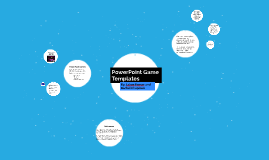Learning Disabilities
Transcript: Students with Learning Disabilities Lovett & Lewandowski (2006),“Learning disabilities are defined as discrepancies between a student’s ability and his or achievement or performance.” - Feel Unprepared for College - Feel that they are on an uneven playing field - Experience psycho-social difficulties - Feel academic anxiety and have difficulty with academically orientented tasks - Have difficulty with transfer of accomodations Greenbaum, et al., (1995) “Adults with learning disabilities: Educational and social experiences during college”. “Students with learning disabilities considered the following factors important to their college success: support from family and friends, availability of campus support services, testing accommodations, priority registration, counseling, and advocacy assistance”. -study aids -supplemental lectures -note takers -audio and visual materials -extended time on tests -separate proctored test locations -active hands on learning -braille -sign language Research has proven that students with learning disabilities tend to have a better success rate when they can receive help from multiple avenues and/or more intensive involvement. (The University of Toronto) Self-Advocacy Challenge LD students are exposed to an array of accommodations in high school and elementary school when entering college there is an adjustment The Disabilities Act of 1990 (ADA) assure that the students have the right to services and accommodations, however, they are required to self-advocate their own accommodations Assess availble services, Descibe their disability and how it affects their learning, Suggest effective accomodations, and disccuss course concerns with instructors and also provide appropriate documentation Lack of programing students may not want to self identify until it is too late rely on faculty to act as a safe haven for student who need assistance or accommodations Challenges Students Face academic anxiety difficulty learning new skills, relying on memorization acadmic self-efficiency lack of belief that they are academically capable lack of academic self-control unable to manage stressful demands of the academic environements Student Success Course - One way to provide learning strategies to students with learning disabilities is to integrate them into success courses that target the general first-year student population M.J. Reed et.al conducted research on this idea of success courses and found that student with learning disabilities GPA’s, self-efficacy, and academic self control increased. Training For Faculty and Staff - Install appropriate training throughout universities for faculty and staff who work with this particular population. -Ensure policies and procedures documentated -Confidentiality -Find extra financial support -Support day to day living -Adaptive computer equipment is avaiable -Ensure the classroom is suitable for all students with disabilities Who are they? How do they learn? What are their challenges? How can we help them? Barnard-Brak, L., & Sulak, T. (2010). Online Versus Face-to-Face Accommodations Among College Students With Disabilities. American Journal Of Distance Education, 24(2), 81-91. doi:10.1080/08923641003604251Greenbaum, B., Graham, S., & Scales, W. (1995). Adult with learning disabilities: Educational and social experiences during college. Exceptional Children, 61, 460-471.Hadley, W. M. (2007). The Necessity of Academic Accommodations for First-Year College Students with Learning Disabilities. (Cover story). Journal Of College Admission, (195), 9-13.Hartman-Hall, H., & Haaga, D. (2002). College students’ willingness to seek help for learning disabilities. Learning Disability Quarterly, 25, 263-274Foley, N. E. (2006). PREPARING FOR COLLEGE: IMPROVING THE ODDS FOR STUDENTS WITH LEARNING DISABILITIES. College Student Journal, 40(3), 641-645.Lovett, B. J. & Lewandowski, L. J. (2006). Gifted students with learning disabilities: Who are they? Journal of Learning Disabilities, 39 (6), 515-527McDermott, P.A., Goldberg, M. M., Watkins, M. W., Stanley, J. L., & Glutting, J. J. (2006). A nationwide epidemiologic modeling study of Id: Risk, protection, and unintended impact. Journal of Learning Disabilities, 39 (3), 230-251. Orr, A. C., & Goodman, N. (2010). "PEOPLE LIKE ME DON'T GO TO COLLEGE:" THE LEGACY OF LEARNING DISABILITY. Journal Of Ethnographic & Qualitative Research, 4(4), 213-225.Reed, M. J., Kennett, D. J., Lewis, T., Lund-Lucas, E., Stallberg, C., & Newbold, I. L. (2009). The relative effects of university success courses and individualized interventions for students with learning disabilities. Higher Education Research & Development, 28(4), 385-400. doi:10.1080/07294360903067013. American with Disabilities Act (ADA) of 1990, 42 U.S.C. 12818 (7)(J) and 12101, et seq. Black, E. N. (2004). Blessing or curse? Distance delivery to students with invisible disabilities. Journal of Library Administration 41(1/2), 47-64. Patton, R. J., & Polloway, A. E.

















